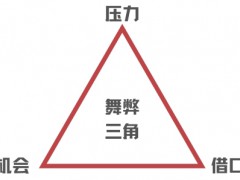美国页岩巨头先锋自然资源公司间接阐明美国页岩钻井商不愿钻探更多新井的原因
能源股成为今年股市上表现最好的股票
近几个月来,美国能源部对美国石油行业采取较为温和的立场
据油价网12月21日报道,12月早些时候,白宫首席能源顾问称页岩钻井商是“非美国人”,尽管美国政府多次呼吁提高原油产量,但他们拒绝提高原油产量。现在,美国能源行业正在进行反击。美国页岩巨头先锋自然资源公司首席执行官斯科特·谢菲尔德是最直言不讳的能源行业高管之一,他间接地解释说,页岩钻井公司不会再钻更多新井。
谢菲尔德在接受英国《金融时报》采访时表示,现在恢复原油产量增长将导致投资者外流,能源股将跌至股市底部。这就是没有公共石油钻井公司会这么做的原因。
谢菲尔德对英国《金融时报》表示:“你必须意识到:当你实现2%的已用资本回报率时,你最终将跌至标准普尔500指数的底部。因此,如果我们最终按照能源顾问所说的要求行事,我们最终将跌回标准普尔500指数的底部。”
业内人士和分析师都认为,投资者要求更高回报的压力是美国页岩油行业目前不愿像过去油价上涨时那样开始增加原油产量的原因之一。
多年来,这些投资者一直在关注页岩钻井商如何烧钱,以使美国成为世界上最大的石油生产国。然后,他们不得不在2020年目睹这一切崩溃,油价历史上首次跌破零,尽管下跌时间很短。
两年后的今天,无论是油价还是页岩钻井商,情况都发生了很大的变化。似乎没有一家页岩公司有野心去看看,如果它投入精力和资源,它能生产多少原油。相反,页岩钻井商正在重新学习资本纪律,并在被忽视多年后优先考虑股东利益。
因此,英国《金融时报》在对谢菲尔德的采访报道中指出,能源股已成为今年股市上表现最好的股票。任何一家能源公司都不太可能拿这样的业绩冒险,仅仅为了响应一个从一开始就反对整个石油行业的政府的呼吁。
然而,正如谢菲尔德在接受英国《金融时报》采访时指出的那样,也存在一些纯粹的实际限制。与几年前相比,油田服务的成本大幅上升,而且设备短缺。
事实上,白宫向石油行业传递的信息的时间跨度非常短,关注的都是当下,其中显然包含这样一种假设:只要政府抱有一点善意,石油工业就能在几天内将原油日产量再增加100万桶。
然而,就目前而言,这实际上是不可能的,暴利的诱惑也没有让钻井商有更慷慨的心情。美国能源部上周发出更为温和的信息也是如此。
能源部对一个行业协会说:“我们渴望与你们合作。”并承认,石油和天然气还将被使用很长一段时间,并承认,如果能源转型发生得太快,“可能会产生意想不到的后果,伤害人们的利益,引发价格反弹。”
正如彭博新闻社所说,这支橄榄枝本身可能是一个积极的信号,但它不太可能改变页岩钻井商的想法。他们根本没有充分的理由继续钻取新井,而美国政府也不能给他们一个理由。
李峻 编译自 油价网
原文如下:
Shale Giant Pioneer Explains Why U.S. Drillers Won’t Drill More
· Pioneer Natural Resources’ CEO Scott Sheffield indirectly told the White House why U.S. shale drillers aren’t eager to drill more.
· Energy stocks have become the best performers on the stock market this year.
· Energy Secretary Granholm has taken a softer stance on the oil industry in recent months.
Earlier this month, the White House’s top energy advisor Amos Hochstein called shale drillers “un-American” for their refusal to boost oil production despite the administrations’ multiple calls to that effect. Now, the industry is striking back. Pioneer Natural Resources’ CEO Scott Sheffield, one of the most outspoken industry executives, has indirectly explained to the White House that shale drillers will not be drilling more and that is it. And he had an excellent reason for it.
Speaking to the Financial Times in an interview, Sheffield said that returning to production growth now would cause an outflow of investors and energy stocks will plummet to the bottom of the stock market. And this is why no public oil driller would do it.
“You’ve got to realise: when you produce a 2 per cent return on capital employed, you end up being at the bottom of the S&P 500,” Sheffield told the FT. “And so if we end up doing what he’s asking us to do, we’ll end up back at the bottom of the S&P 500.”
Investor pressure for higher returns has been one of the reasons given by both industry and analysts for the current unwillingness of the U.S. shale oil industry to start ramping up output the way it always did in the past when prices rose.
These investors have been watching for years how shale drillers burn their cash in order to turn the United States in the biggest oil producer in the world. Then they had to watch all this breakdown in 2020 with oil prices dropping below zero for the first time in history, even though the drop was a short one.
Now, two years later, things are very different both with oil prices and with shale drillers. No company seems to have the ambition to see just how much oil it can produce if it puts its mind and resources to it. Instead, shale drillers are relearning capital discipline and prioritizing their shareholders after, one might say, years of neglect.
As a result, the FT points out in its story on the interview with Sheffield, energy stocks have become the best performers on the stock market this year. It is unlikely that any energy company would risk this performance just to respond to the calls of an administration that has from the start been against the whole oil industry.
Yet, there are also purely practical constraints as well, as Sheffield noted in his talk with the FT. Oilfield services cost a lot more than they did a couple of years ago and there are equipment shortages.
Indeed, messaging from the White House to the oil industry has had a remarkably short horizon, the focus being on the present and involving the apparent assumption that with a bit of good will, the industry could add another million barrels daily to output in a matter of days.
For now, however, this is physically impossible, and threats of windfall profits have not helped put drillers in a more generous mood. Neither has the much softer message that came last week from Energy Secretary Granholm.
“We are eager to work with you,” she told an industry association, acknowledging that oil and gas were going to be used for a long time yet and admitting the energy transition, if it happens too fast, “could have unintended consequences that hurt people, cause backlash.”
This olive branch, as Bloomberg called it, might be a positive sign in itself but it is unlikely to change shale drillers’ minds. There is simply no good reason for them to drill more and the administration cannot give them one.
免责声明:本网转载自其它媒体的文章及图片,目的在于弘扬石化精神,传递更多石化信息,宣传国家石化产业政策,展示国家石化产业形象,参与国际石化产业舆论竞争,提高国际石化产业话语权,并不代表本网赞同其观点和对其真实性负责,在此我们谨向原作者和原媒体致以崇高敬意。如果您认为本站文章及图片侵犯了您的版权,请与我们联系,我们将第一时间删除。







